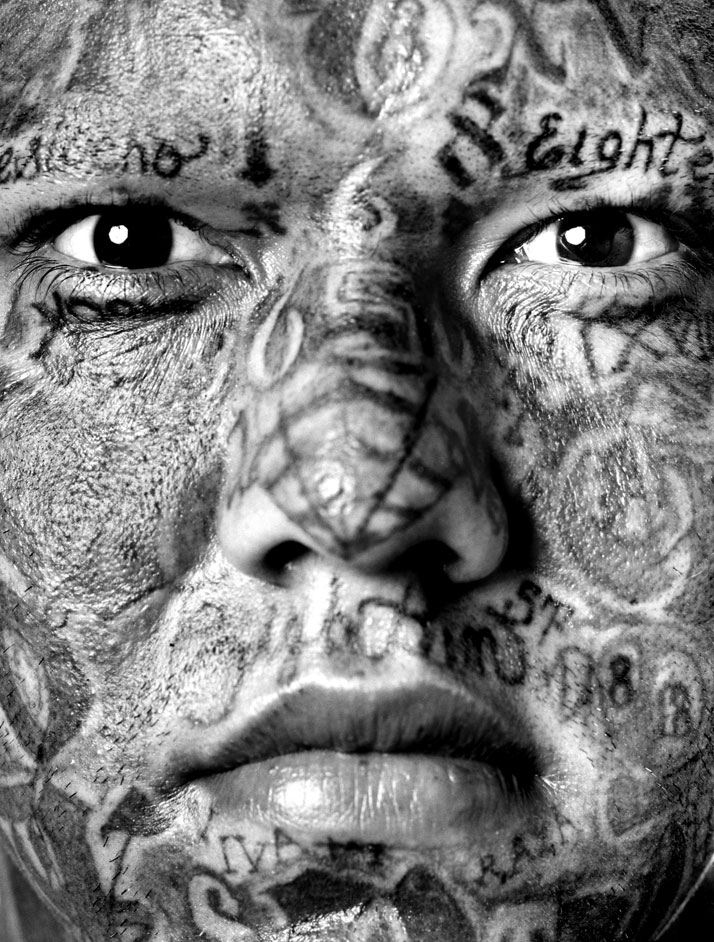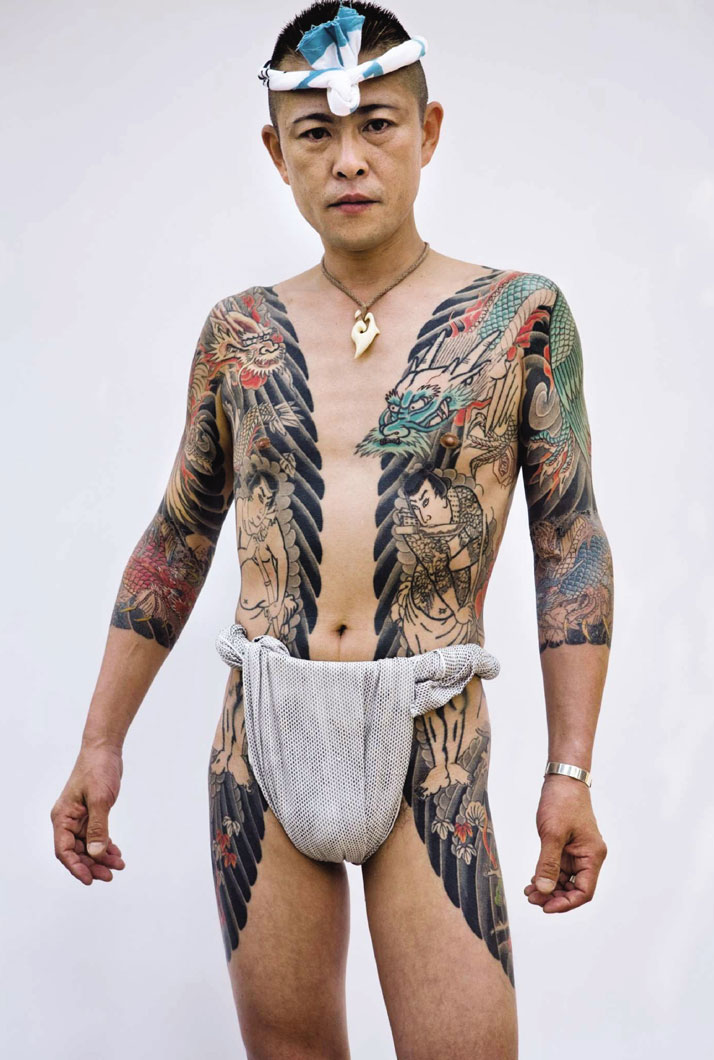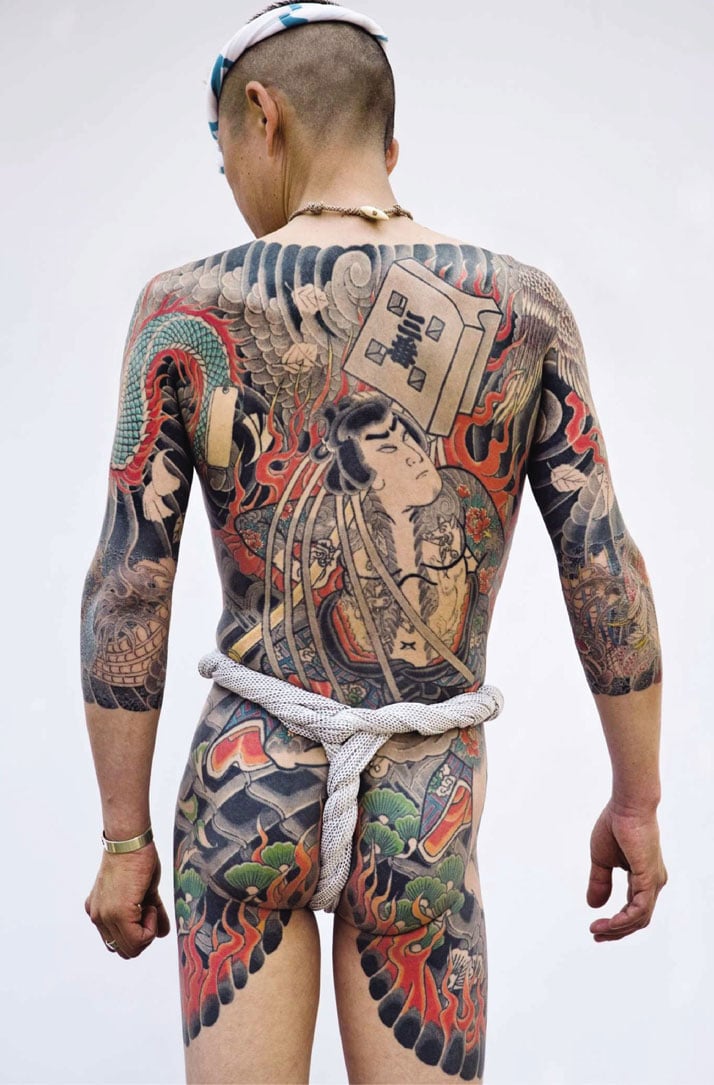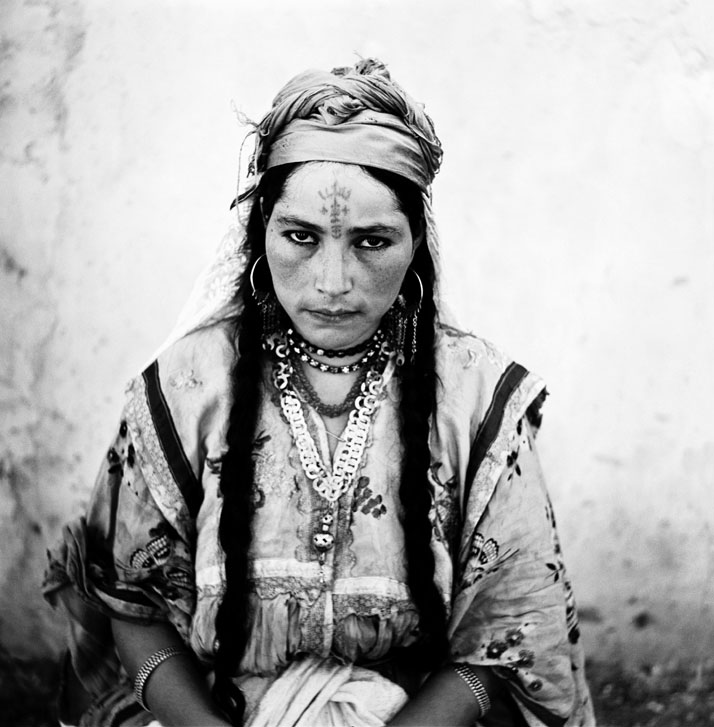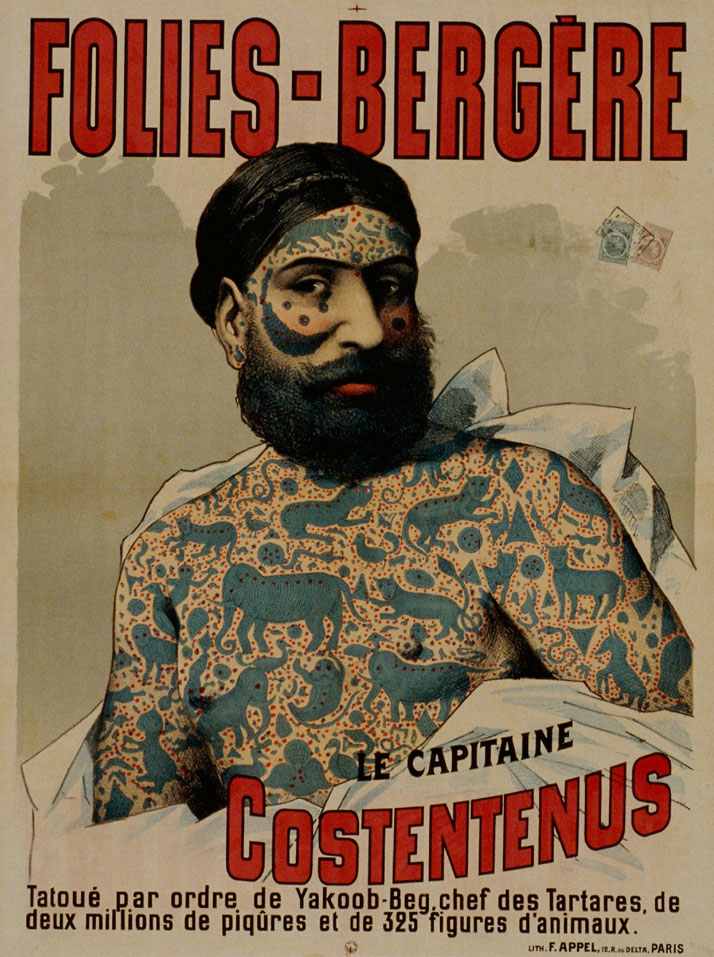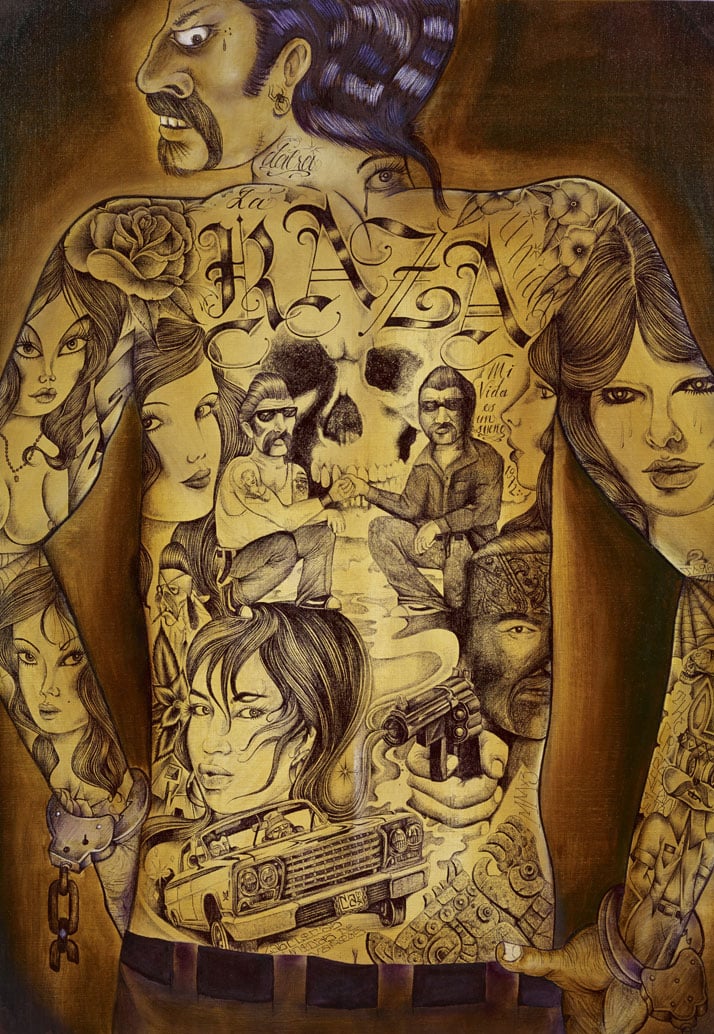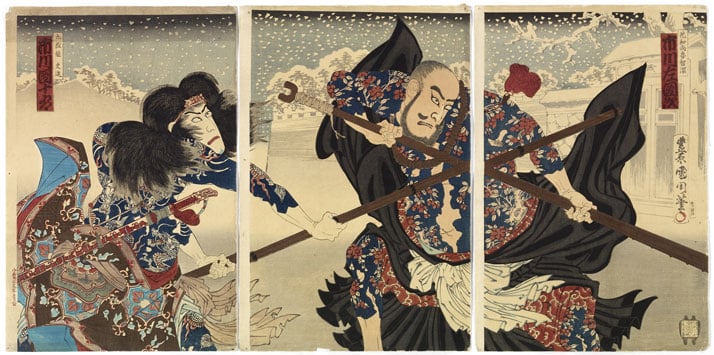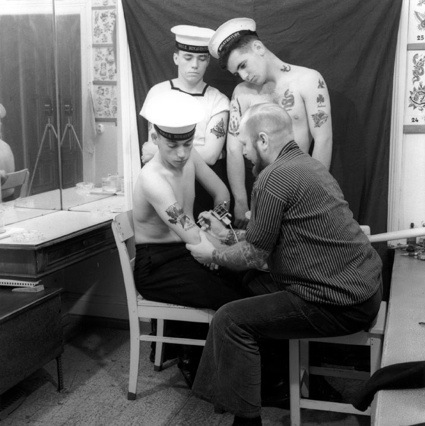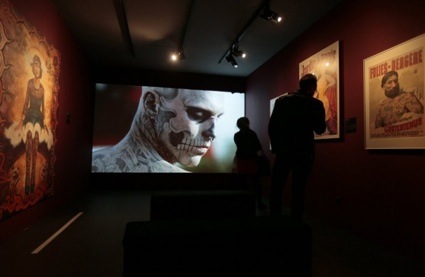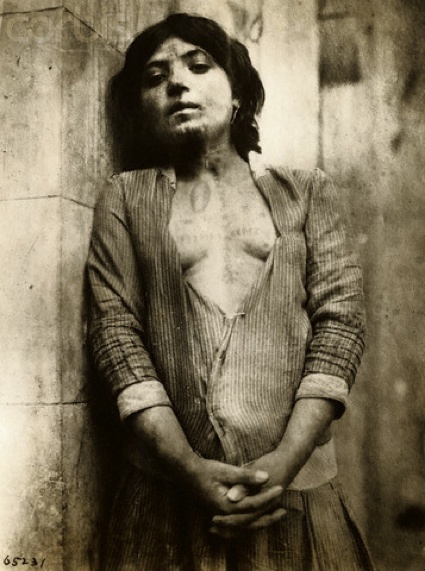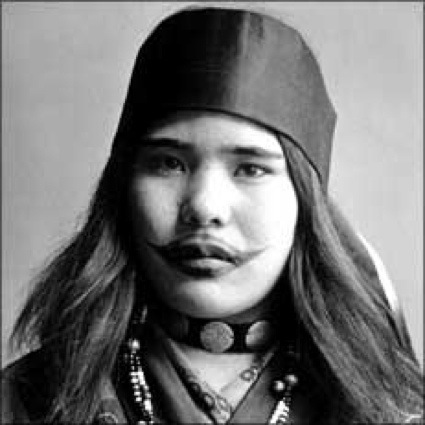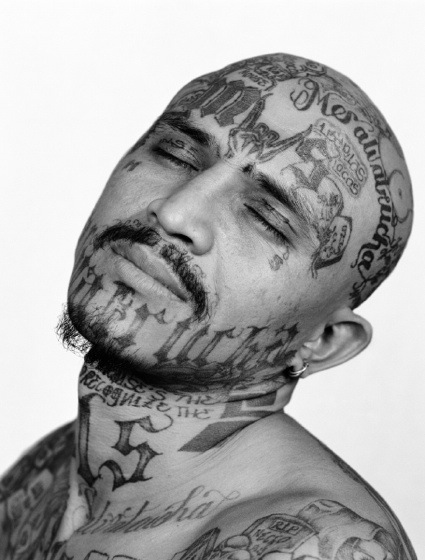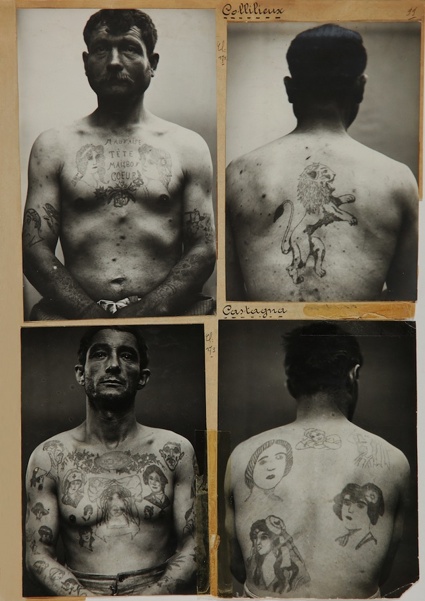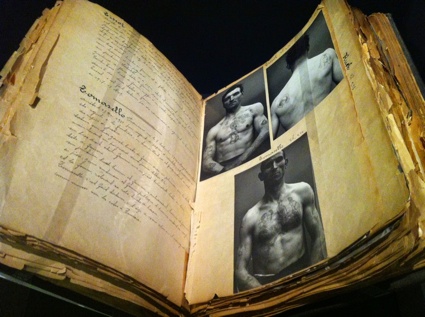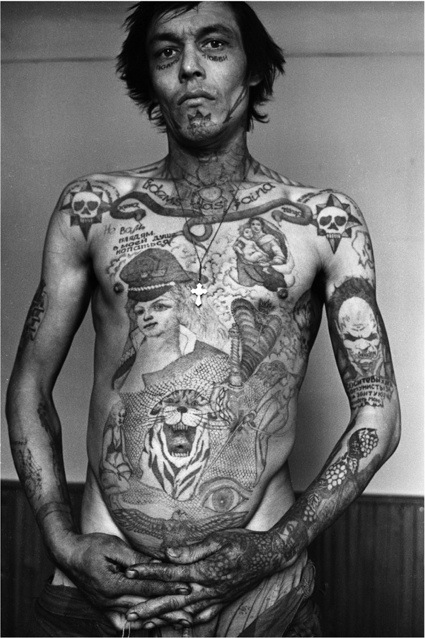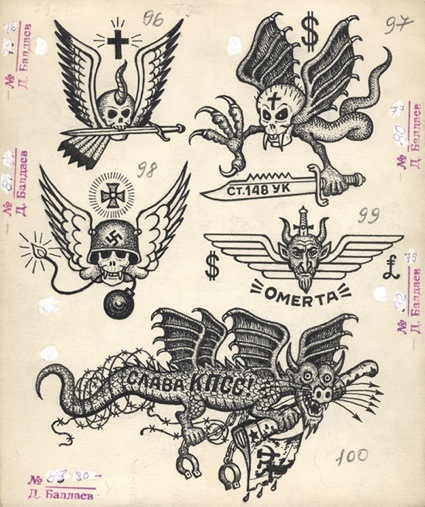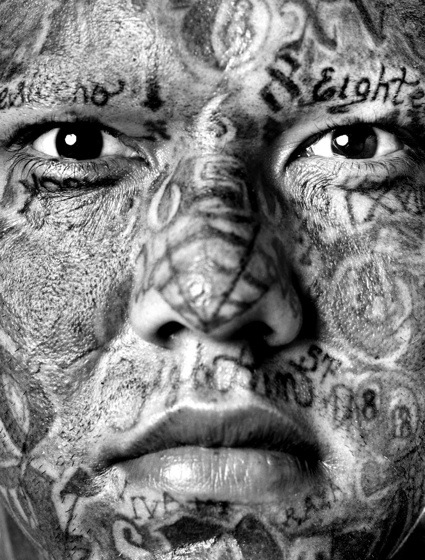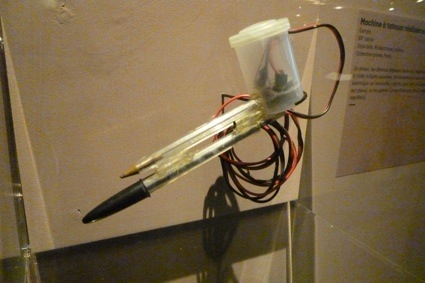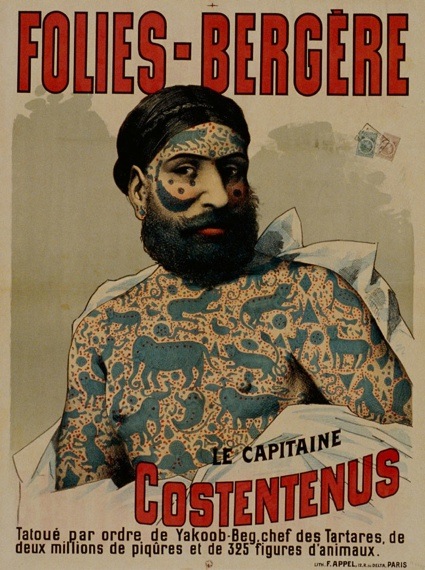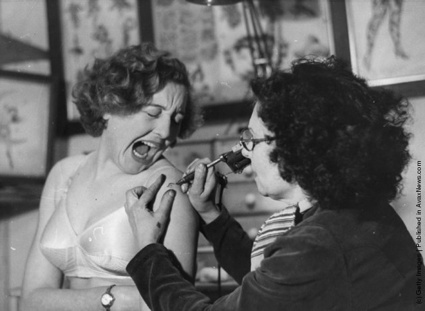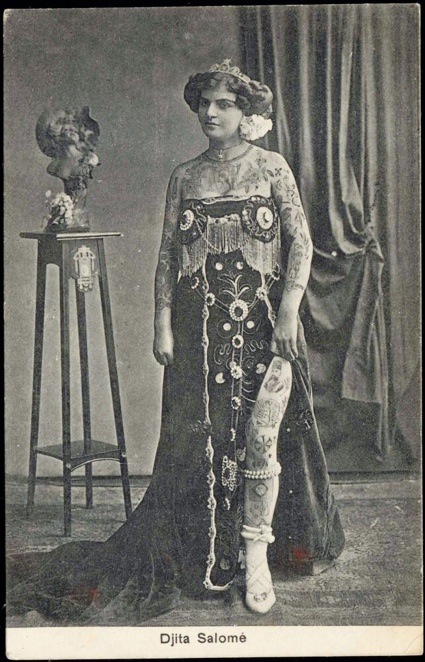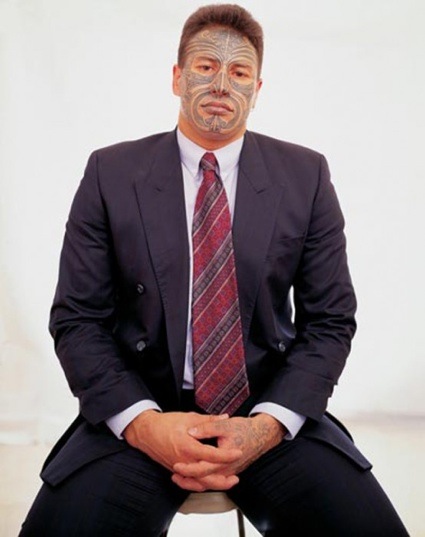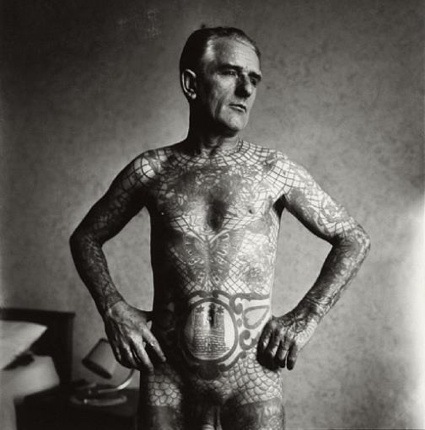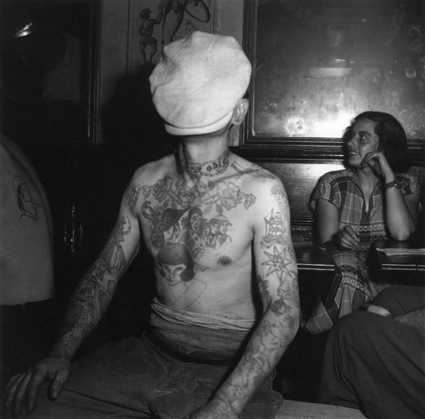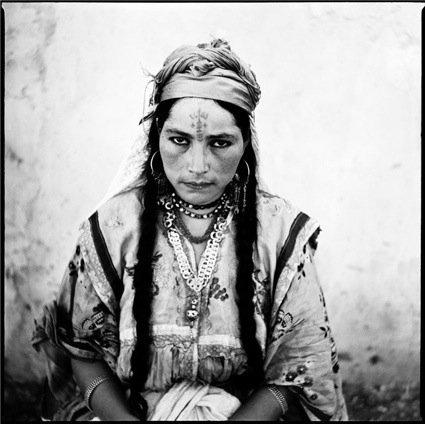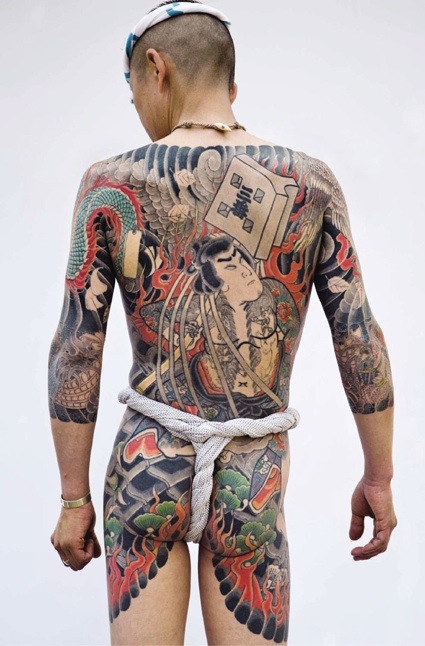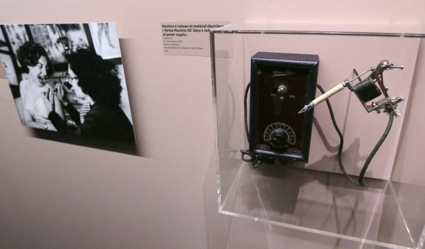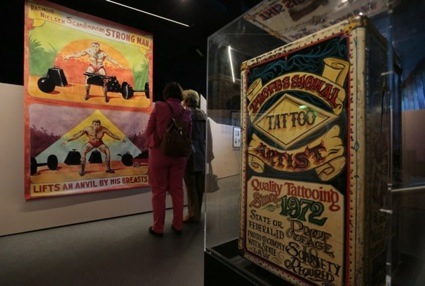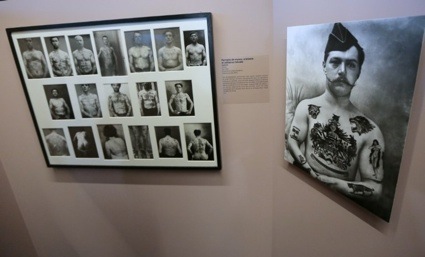<b>Japanese</b> ink: The forbidden world of the <b>tattoo</b> | Japanese Tattoos |
- <b>Japanese</b> ink: The forbidden world of the <b>tattoo</b>
- <b>Tattoo</b> you: <b>Tattoos</b> in <b>Japanese</b> history and society
- Tatoueurs, Tatoués: The Biggest <b>Tattoo</b> Art Exhibition In The World <b>...</b>
- Tattooists, <b>tattooed</b> - we make money not art
| <b>Japanese</b> ink: The forbidden world of the <b>tattoo</b> Posted: 19 Nov 2012 02:52 PM PST Throughout the world Japanese inspired designs are amongst the most popular in tattoo art. Typical designs being kanji, Koi carp or details from Hokusai's woodblock print 'The Great Wave of Kanagawa' (神奈川沖浪裏). There is a delightful irony in this considering that tattooing has been outlawed or at the very least highly disapproved of throughout Japanese history.
Traditionally tattooing in Japan was seen as a sign of barbarianism and only used as punishment. In the 17th century it was used exclusively to brand criminals and outcasts. It was outlawed in the 18th century and consequently taken up by the yakuza (やくざ). It remained illegal in the 19th century amidst fears that it would seem barbaric to the West. In 1936 those who sported tattoos were rejected from the army, seen as exhibiting signs of ill discipline. It was only after WWII that it finally became legal after General MacArthur liberalised the laws. The full body tattoos that the yukuza bore not only were intimidating to look at but also signified that the individual had konjyou (こんじょう, 根性) or guts. The yukuza considered the pain inflicted a proof of their courage, the permanence a proof of their loyalty to the group and the fact that it was illegal made them outlaws forever.
Even though it is now legal, there is still a widespread disapproval against tattooing. These days throughout Japan those who bear tattoos are banned from bath houses (onsen, おんせん, 温泉) swimming pools and certain golf courses and gyms but the restrictions on the tattooed individual extend beyond that. It also proves difficult to get bank loans and rental contracts if you sport visible tattoos and can affect your employment opportunities.
Osaka Mayor Tōru Hashimoto recently asked all 33,546 of city workers if they had a tattoo, going on to suggest that all who answered yes should quit municipal government. The up-and-coming politician was backed surprisingly by one of the countries irezumi masters. The traditional art of irezumi (いれずみ, 入墨) is still applied using wooden needles and charcoal ink. Horiyoshi the Third (based in Yokohama) keeps his own 'body armour' concealed at all times and states that the simple art of revealing a irezumi tattoo is intended to be threatening. However, despite the negativity surrounding it body art is becoming increasingly more popular with the younger generation. Led by fashionable celebrities such as popular singer/model/actress Ayumi Hamasaki and 'queen of Japanese pop music' Amuro Namie.
In fact, the trade is flourishing. There are now 500 tattoo shops which stretch all over the 4 main islands, there are 3 main magazines devoted to the art (Tattoo Burst being the most popular) and tattoo events and conventions occur at least once a month. Books on the art are even being stocked at trendier shops such as Village Vanguard. Despite being traditionally associated with men, many women are indulging in skin art. In fact, many of the top tattoo artists are female and they dominate as editors of the tattoo magazines. Sanrio characters, kimono (きもの, 着物)prints and foo-dogs are amongst the favourite tattoo designs. Charges are almost double the European average starting at ¥15, 000 per hour. Due to the history of subterfuge most artists still work privately by appointment echoing the underground roots of the art, if anything this increases their value and Japanese tattoo artists are coveted globally for their unique aesthetic and take on this ancient art. |
| <b>Tattoo</b> you: <b>Tattoos</b> in <b>Japanese</b> history and society Posted: 18 Oct 2013 07:05 PM PDT In 2012, Osaka Governor and right-wing nut Toru Hashimoto launched a campaign to make the city's public workers submit documentation of all the tattoos on their bodies in embarrassing detail. He did this because he was concerned about public workers having tattoos, a sign that they are of questionable character or have underworld ties. Being the son of a yakuza himself, Hashimoto would know. (By the way, he's in the news again with his foot stuffed deep inside his mouth for making comments thanking Korean sex slaves for helping Japanese soldiers unwind and cope with the stresses of war. Yeesh.)
Perhaps this story better illustrates Hashimoto's hypocrisy and heavy-handed governing style than Japan's attitude toward tattoos, but anyone who has lived in Japan knows that there is a taboo against tattoos. Many onsen (温泉 – public bath), gyms, public schools and golf courses don't allow people with tattoos. Tattoos tend to have underworld connotations in Japan. Full body tattoos especially are associated with the yakuza. But the yakuza don't have a monopoly on body art. Organized crime has only recently coopted tattooing, which is an old tradition in Japan that has evolved over the centuries. The tradition of tattooing in JapanThe traditional style of tattooing in Japan is called irezumi (刺青). A literal translation of the name would be something like 'skin poke,' which refers to the way ink is inserted just under the skin. The tradition of tattooing in Japan probably goes as far back as the Jomon Period (14,000 BC to 300 BC). Cord markings on figures from the Jomon Period appear to be tattoos, although this can't be verified. Chinese writers from the Yayoi Period (300 BC to 300 AD) commented on the tattoos of the Japanese in their writing. These tattoos were decorative but also probably associated with spiritual beliefs and religious rituals. The Kofun Era, which started in 300 AD, was where there began to be negative connotations associated with tattoos. Criminals began to be tattooed as a form of punishment. Tattoos in the Edo periodAlthough tattooing became associated with criminals, decorative body art continued after the Kofun Era and culminated in the designs of the Edo Period (1600-1868). Body art from this period was heavily influenced by ukiyo-e (浮世絵 – woodblock prints) and their designs. But it was also during the Edo Period that tattoos became a mainstay of organized crime and tattooing was outlawed by the Edo government. The art of Japanese tattoo was kept alive largely by artists that continued to work during this prohibition, practicing their art on foreign people who were in Japan during the Meiji Era. This is the reason why it's so advanced today despite its underworld connotations. Changing attitudesTattoos are gaining popularity among young people and attitudes toward body art are relaxing. Celebrities like Mika Nakashima, Amuro Namie and Hamasaki Ayumi show off their tattoos and this has led many young Japanese to get tattoos. Japan is known throughout the world as a good place to get high-quality tattoos. Cover photo by davegolden |
| Tatoueurs, Tatoués: The Biggest <b>Tattoo</b> Art Exhibition In The World <b>...</b> Posted: 29 Apr 2014 12:00 AM PDT
The last tattooed Kalinga woman, Philippines, 2011. © Jake Verzosa, artist's private collection. Tattoo art hasn't always been so cosmopolitan, nor has it been viewed as an art form. That is, until very recently. Curated by Anne and Julien, editors of 'outsider' art magazine Hey!, well-known French tattooist Tin-Tin, and experts in their field, Pascal Bagot and Sébastien Galliot, the exhibition ''Tatoueurs, Tatoués'' (tattooists, tattooed) traces the history of the tattoo from the 18th century to the present-day. Set to begin on 6th May at the Quai Branly Museum in Paris, the exhibition will comprise some 300 works making it one of the most significant tattoo shows in the world and will feature tattoo art from around the world spanning Japan to Europe. Pascal Bagot, journalist, film director and curator of the Japan section for the Tatoueurs, Tatoués exhibition, talked to Yatzer about this first major homage to tattoo art and the significance of Japanese tattoo as an art form. Sitting in a dark corner of a wood panelled bar close to République in central Paris, wearing a woolly navy hat and a distressed denim jacket, the heavily bearded Pascal Bagot looks up as I approach the polished mahogany table. His blue eyes smile from behind a pair of half-rimmed glasses before he offers an assertive handshake. Born in Toulouse and having lived in Paris for 16 years, the 36-year-old's passion for Asian tattoo art began when he first came across the work of Paris-born tattooist Filip Leu in the French tattoo publication Tatouage Magazine. ''I was immersed in metal music and tattoo art was something I was already familiar with, but it wasn't until I saw Leu's dragon on a woman's arm that something clicked. When I saw the images of Tokyo-based master tattooist Horitoshi I's work, I decided I wanted to be tattooed.''
Women wearing tattoos and costumes. Photographer: anonymous. © CORBIS pour Bettmann.
Maras portrait, 2006 © Serie Maras, 2006. Isabel Muñoz. Although Pascal Bagot had already travelled around Asia and despite his growing fascination with Japanese tattoo art, he was reluctant to confront Japan right away which he explains: ''Japan had a mystery element to it, something to be revealed, which I was utterly drawn to. Although I had travelled around Southeast Asia, I didn't want to explore Japan as a backpacker.'' This was all to change in 2006 when Bagot found the door that would take him right to the core of Japan as well as the age-old art form and went to Japan for the first time. ''I had fallen in love with Japanese tattoo art and decided that I wanted to be tattooed - that would be the context I had been looking for to learn about the country. I didn't want to stay on the surface of Japanese culture; I wanted to try and go to the very heart of the country.'' It was on his first trip that Bagot met Sensei (master) Horitoshi I. He had already decided that he would be the one to tattoo him. ''I loved his work and fortunately got on really well with him. I worked out that it would take about 8 years – and about 20,000 euro – to finish my tattoo, which is a dragon that covers my back. There was no doubt in my mind. As soon as I had the idea, I had to have it – it was an obsession.''
Traditional Japanese tattoo © Photo: Tatttooinjapan.com / Martin Hladik.
Traditional Japanese tattoo © Photo: Tatttooinjapan.com / Martin Hladik. Ever since, Bagot has travelled to Japan between one and three times a year, a total of 124 hours of work, to continue his tattoo with the Sensei which will be finished this year. ''I'm not sure if I'll stop there. We'll have to see. Because the beauty of traditional Japanese tattoo is that the Sensei envisions a continuation of the tattoo at every stage in case the client wants to come back and continue it. It can also be finished at any stage the client decides.'' In 2010, Pascal Bagot went on to direct The Way of the Ink (La Voie de l'Encre), a behind-the-scenes documentary about Japanese tattoo art. ''I was completely flabbergasted by the magnitude of the work and culture behind traditional Japanese tattoo art. It was a real culture shock. For me, this documentary, along with the magazine articles I have written and the Tatoueurs, tatoués exhibition, are ways of shining light on this complex and extremely meticulous art form that is still very much dependent on secrecy and discretion – something that is basically almost impenetrable.''
Yantra, Muay Thai boxer, Bangkok. Photography, montage on 'kapa-board', France, 2008-2011 © Photo: Cédric Arnold.
Flottenbesuch in Hamburg 1966. Photo: Schwarz-Weiß © Courtesy Herbert Hoffmann and Galerie Gebr. Lehmann Dresden/Berlin.
Portrait of an Algerian woman, Algeria, 1960. © Marc Garanger, artist's private collection. Japanese tattoo, also called Irezumi, Horimono or Gaman, can cover the entire body, and is still heavily stigmatised as a result of its association with the tattoos worn by members of the Yakuza, or Japanese mafia. In fact, records of tribal Japanese tattoo go as far back as several thousand years B.C. and although the context of tattoo art has of course since changed, it still remains an expression of individuality, as Bagot explains: ''It wasn't until the 19th century, during the cultural Edo period, that Japanese tattoo started to develop as an art. Before that, it was used primarily to mark prisoners and also developed in pleasure quarters of cities as a symbol of love between prostitutes and their clients.'' Extremely elaborate, both artistically and culturally, traditional Japanese tattoo also evolved with the popularity of Kabuki theatre and the very arduous and intricate work of Japanese print artists; over 70 prints will therefore be on a three-month rotation as part of the exhibition. ''Through Tatoueurs, Tatoués it was important for me to share the complexity of Japanese tattoo culture and how it has and is still evolving as an art form. Japanese tattoo art is still taboo in Japan, but if we want this art form to survive and if we want tattoo art to be more widely accepted as an art, it is important to document it and share its beauty. My personal hope is for the negative judgments associated with tattoos to be dispelled in Japan because it is simply magnificent in its complexity and so much more than just a Yakuza symbol.''
Poster of the anthropological exhibition: "Tatoueurs, tatoués" from 6th May 2014 until 18th Octobre 2015 © Musée du quai Branly.
Tattoo on a female body, silicone. Artist: Tin-Tin, France, 2013 © Musée du quai Branly – photo: Thomas Duval.
Images from the 'Recueil Lacassagne', 1920-1940 © Gdalessandro/ENSP.
Captain Costentenus tatooed by order of Yakoob-Beg, 19th century © Fonds Dutailly, Ville de Chaumont.
Tattoo on canvas by Dr Lakra, Mexico, 2013 © Musée du quai Branly, photo: Claude Germain.
Tryptic of Japanse prints: the dual. The prints represent two Kabuki theatre actors in a dual against a winter backdrop. Realised by Toyohara Kunichika (1835-1900). The actor on the right is Ichikawa Danjurô, in the rôle of Kumonryû Shishin, a mythical figure tattooed with nine dragons. The actor on the right is Ichikawa Sadanji in the role Kaoshyôrochishin, covered in a Kaidô flower tattoo representing the family of roses. Edo and beginning of Meiji periods, year 18 of the Meiji era, Japan © Musée du quai Branly, photo: Claude Germain.
Tattooed man from the Marquise Islands, 19th century, artist: anonymous. © Musée du quai Branly, photo: Claude Germain.
Artoria Circus Lady - Painting by Titine Leu, 2000
Poster for the documentary ''The Way of the Ink'' (La Voie de l'Encre) by Pascal Bagot, Pamela Valente - Lardux Films, 2011. sources: |
| Tattooists, <b>tattooed</b> - we make money not art Posted: 13 May 2014 08:02 AM PDT
The musée du Quai Branly, my favourite Paris museum, has recently opened a fascinating show called Tattooists, tattooed. I haven't stopped telling people they should go and see it if they happen to be in town in the coming months. In town and french speaking preferably because a large part of the information in the gallery spaces hasn't been translated in english. I was expecting the usual about tattoos: the criminals, the freak shows, the Māori warriors, the virtuosity of contemporary tattoo artists. I certainly found all of that in the show. I wasn't however expecting to be shocked by the way tattoos were used to mark women.
In the 1920s, thousands of Armenian girls and women managed to escape the Genocide of their people by feeling to Syria. They were kept in slavery and forced into prostitution. In order to identify them and prevent their escape, their pimps tattooed their face and arms. The girl in the photo above had just been rescued from a Turkish house and was cared for by the Y.W.C.A. workers at Aleppo.
The significance of the tattoos worn by Ainu women couldn't be more different. In the Ainu culture of Northern Japan, only women tattooed and were tattooed. The traditional practice was a prerequisite to marriage and to the afterlife. Mouth tattoos were started at a young age with a small spot on the upper lip. The design would gradually increase in size over the years. The exhibition looks at tattoo through ages and cultures. It also demonstrates that tattooing is an art in constant evolution that traverses all continents, even if its essence, acceptance and purpose differ from one culture to another. While in societies from the Oriental, African and Oceanian worlds, tattooing had a social, religious and mystical role, the West saw it as a mark of shame. In the past, only criminals, prostitutes, sailors, circus freaks and other marginals would wear one. Or many. The exhibition displays 300 historical and contemporary artefacts, including photographs, prints, paintings, posters, short films, tribal masks, books, clothing, tattoo-making instruments (such as Thomas Edison's perforating pen) and even mummified samples of body parts and preserved tattooed human skin.
I was obviously drawn to the displays showing how tattoo was used by 'the underworld' to frighten, claim their belonging to a certain gang, parade their crimes or share secret codes. Tattoos were of great interest to European criminologists during the late 19th century. Many scholars believed that the presence of tattooing in European culture represented worrying signs of atavism, criminal proclivity, or dangerous 'degeneration' within their populations (via.) French criminologist Alexandre Lacassagne, however, believed that the choice of tattoo offered an insight into the criminal mind. He catalogued thousands of images according to type and body location. In 1881 he published Tatouages: Étude Anthropologique Et Médico-légale
Lacassagne's archives offer an interesting parallel to the drawings and photos detailing Russian criminal tattoos. Sergei Vasiliev worked both as a photographer for a newspaper in Chelyabinsk and as a prison warden when he encountered the work of Danzig Baldaev, the son of an ethnographer who was arrested as an "enemy of the people". Baldaev spent over 30 years working in the Soviet penal system. He recorded the horrors of the Gulag in dozens of drawings but he gained fame for his meticulous documentation of the tattoos etched on the skin of the inmates.
Nowadays, you don't have to be a criminal to wear tattoos. The notorious Mara Salvatrucha gangs of Los Angeles and Central America wear their symbols and languages on their faces. With the help of a priest working on the rehabilitation of gang members, Isabel Muñoz gained access to a prison in El Salvador where she made stunning portraits of the men.
More images from the show:
Other British Pathé about tattoos: a 1936 video showing how permanent makeup is tattooed on ladies' faces, and Bristol Tattoo Club (1954.)
Marc Garanger's 1960 portrait of a woman whose village was destroyed during Algeria's war of independence from France. She clearly wasn't impressed by the French photographer.
You probably don't want to see this video but here is the Lizardman, i discovered its existence in one of the videos screened at the museum:
Tattooists, tattooed is at the musée du Quai Branly until 18 october 2015. It was curated by Anne & Julien, founders of the magazine "Hey! Modern Art and Pop Culture," in collaboration with tattoo artist Tin-Tin, anthropologist Sébastien Galliot and journalist Pascal Bagot. Related: Russian Criminal Tattoo portraits. |
| You are subscribed to email updates from Japanese Tattoos - Google Blog Search To stop receiving these emails, you may unsubscribe now. | Email delivery powered by Google |
| Google Inc., 20 West Kinzie, Chicago IL USA 60610 | |








